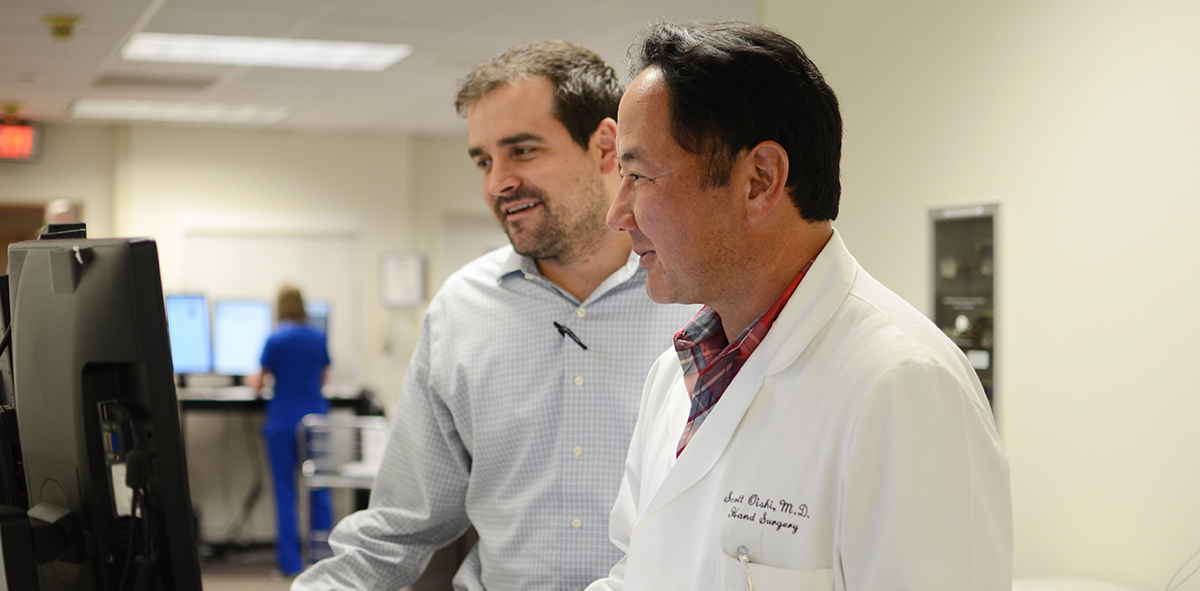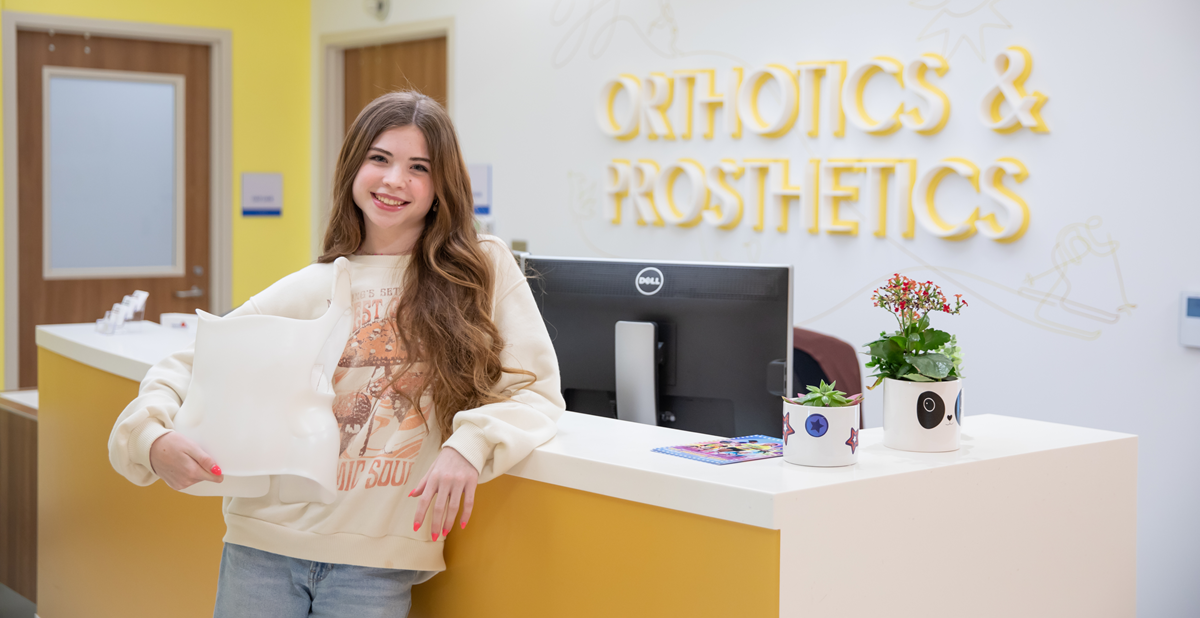
Jul 31, 2018 / Research & Innovation
Hand Research: What Are We Learning?
At Scottish Rite Hospital, conducting innovative research is at the core of our mission. Through the hospital’s six centers for excellence, our medical and research staff are able to analyze complex conditions to discover new and better treatment techniques for our patients.
The Center for Excellence in Hand includes pediatric hand surgeons and research staff who are dedicated to providing specialized care to children with upper limb differences. With over 10 active research projects, the center is committed to advancing the care for these patients so they can have active and productive lives into adulthood.
Below are a few of the current hand research projects:
Madelung’s Deformity of the Wrist
Purpose: To determine how patients with Madelung’s deformity are doing after a long-term follow-up. Madelung’s is a rare deformity of the forearm and thought to be caused by a ligament near the wrist being too restricted. Patients will have surgery to help correct this to alleviate any pain they are feeling, but sometimes a secondary surgery is needed.
The research team wanted to see if patients who had surgery for Madelung’s disease were still pain free and their wrist and forearms were doing well. From the study, the team found that the patients who reported low to no pain, actually had a low rate of another surgery and no loss in their range of motion related to the wrist and forearm.
Elbow Release and Tricepsplasty in Arthrogrypotic Patients
Purpose: To improve the reach of patients with arthrogryposis to promote independence with daily tasks.
The research team brought back patients who had an elbow release and tricepsplasty surgery as a young child to see if the surgery was continuing to improve their ability to use their hands and elbows to reach and grasp in everyday activities.
From the study, the team found patients to be doing well and continuing to improve their abilities for reaching and grasping, but also through a patient reported outcome measure, found these patients to be just as happy and with no more discomfort than those of similar age.
Upper Limb Anomaly Registry
Purpose: To examine the population of patients with upper limb differences who visit the hand clinic.
The research team is currently collecting data on patients who visit the hand clinic with any forms of upper limb deformities. This includes conditions such as polydactyly, arthrogryposis, syndactyly, trigger thumb, symbrachydactyly and several others. The purpose of this research is to better understand the patients and families who are in need of care. Those who volunteer to participate in this registry, provide an extensive amount of simple information that reflects complex histories. Currently, there are more than 1,300 patients enrolled with various diagnoses. This registry gives our hand experts the ability to analyze a large group of patients diagnosed with various upper extremity differences to better understand a certain condition and whether or not the treatment is effective.
Learn more about the innovative research in the hospital’s Center for Excellence in Hand.
The Center for Excellence in Hand includes pediatric hand surgeons and research staff who are dedicated to providing specialized care to children with upper limb differences. With over 10 active research projects, the center is committed to advancing the care for these patients so they can have active and productive lives into adulthood.
Below are a few of the current hand research projects:
Madelung’s Deformity of the Wrist
Purpose: To determine how patients with Madelung’s deformity are doing after a long-term follow-up. Madelung’s is a rare deformity of the forearm and thought to be caused by a ligament near the wrist being too restricted. Patients will have surgery to help correct this to alleviate any pain they are feeling, but sometimes a secondary surgery is needed.
The research team wanted to see if patients who had surgery for Madelung’s disease were still pain free and their wrist and forearms were doing well. From the study, the team found that the patients who reported low to no pain, actually had a low rate of another surgery and no loss in their range of motion related to the wrist and forearm.
Elbow Release and Tricepsplasty in Arthrogrypotic Patients
Purpose: To improve the reach of patients with arthrogryposis to promote independence with daily tasks.
The research team brought back patients who had an elbow release and tricepsplasty surgery as a young child to see if the surgery was continuing to improve their ability to use their hands and elbows to reach and grasp in everyday activities.
From the study, the team found patients to be doing well and continuing to improve their abilities for reaching and grasping, but also through a patient reported outcome measure, found these patients to be just as happy and with no more discomfort than those of similar age.
Upper Limb Anomaly Registry
Purpose: To examine the population of patients with upper limb differences who visit the hand clinic.
The research team is currently collecting data on patients who visit the hand clinic with any forms of upper limb deformities. This includes conditions such as polydactyly, arthrogryposis, syndactyly, trigger thumb, symbrachydactyly and several others. The purpose of this research is to better understand the patients and families who are in need of care. Those who volunteer to participate in this registry, provide an extensive amount of simple information that reflects complex histories. Currently, there are more than 1,300 patients enrolled with various diagnoses. This registry gives our hand experts the ability to analyze a large group of patients diagnosed with various upper extremity differences to better understand a certain condition and whether or not the treatment is effective.
Learn more about the innovative research in the hospital’s Center for Excellence in Hand.



